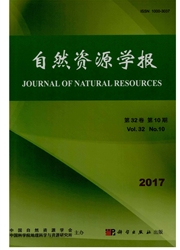

 中文摘要:
中文摘要:
农地整理建成设施及设备的管护是权利让渡和责任主体迁移的过程,对农地整理管护绩效开展研究是破解当前管护困境的有效途径。论文在构建农地整理管护绩效测度体系及其评估方法基础之上,运用威廉姆森交易费用"维度论"分析框架阐述农地整理管护绩效的影响因素。实证研究结果表明,实物资产专用性、人力资产专用性、交易不确定性、交易频率等维度要素对管护绩效的影响较为显著;论文运用工具变量方法解决计量模型中解释变量内生性问题,探讨了内生变量与工具变量以及其他解释变量的作用关系。研究结果验证了威廉姆森分析框架的有效性,并建议管理部门重视耕地生产水平的改善程度、村干部的表率示范作用以及管护人员的明确落实等关键影响要素。
 英文摘要:
英文摘要:
Rural land consolidation is typically conducted as a consecutive sequence: decisionmaking, planning and budgeting, constructing, and then followed by supervision and maintenance. The behavior of Supervision and Maintenance of Rural Land Consolidation(SMRLC) implies the transfer of rights and duties between different subjects of responsibility,while the aim of SMRLC is to sustain regular operation of infrastructure and equipment provided by rural land consolidation and coordinate interrelationship between human being and land resources. The performance study of SMRLC is vitally important to solve the current predicament of lower efficiency or even deficiency of supervision and maintenance. First,index system and assessment method for SMRLC performance are proposed. Performance indices are set from the stakeholders' viewpoint and weights are gained from AHP method after consulting 12 scholars throughout China. Second, the kernel concept of transaction is introduced to describe the behavior of SMRLC. Therefore, based on transaction cost theory,Williams' analysis framework is employed to explain the impact mechanism of the performance of SMRLC. The empirical study is carried out in Dengzhou, Henan and Longzhou, Guangxi, and instrumental variable method is applied to solve the endogenous explanatory variable. Both Ordinary Least Square(OLS) and Instrumental Variable(IV)regression results show that the most significant factors are specificity of material asset,specificity of labor asset, transaction uncertainty and transaction frequency. The resutls validate Williams' analysis framework for transaction cost and thereby it is highly suggested that management agency should pay close attention to the production level of cultivated land, the involvement of village leaders, and the staffs for supervision and maintenance.
 同期刊论文项目
同期刊论文项目
 同项目期刊论文
同项目期刊论文
 期刊信息
期刊信息
